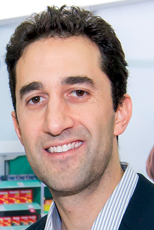
The dramatic rise in popularity of assisted living stems from the confidence and security of living in a modern setting designed to provide residents with a wide range of activities, programs and medical support services to fit their lifestyle and specific situation. Yet this presents unique challenges for long-term care administrators seeking to deliver a diverse spectrum of care and individualized medical treatment plans that make the best use of staff time and energies, while providing residents the assistance they need, along with promoting their continued independence.
One of the most vital and staff intensive aspects of resident care is, of course, monitoring of individuals’ overall health and wellness as part of resident operations and programing. While the personal touch is vital to maintaining residents’ confidence, there are challenges in workflow efficiency and scalability. There are solutions available today that combine caring support with health monitoring that assist in solving the challenges of efficiently managing expanded care services with existing staff resources. Technology solutions with proven results, such as Remote Health Monitoring, are increasingly being used in assisted living settings to enhance personal and professional care support.
RHM is a tool – involving hardware and software – that enables healthcare monitoring of individuals outside clinical settings such as doctors’ offices and hospitals. This provides healthcare monitoring where it is most convenient for the individual, namely in their assisted living residence. This technology-based solution allows individuals to communicate their various vital sign measurements (heart rate, weight, etc.) directly to facility personal or professional caregivers and even family members as appropriate. By engaging residents to be proactive about managing their own healthcare, RHM helps to manage valuable clinical resources more cost effectively and improves care coordination, streamlining sharing of valuable information across the entire care team.
RHM can be seamlessly implemented into assisted living facilities to improve overall quality of care and individual satisfaction. Programs can be tailored to best fit existing facilities and operations. RHM helps alleviate the issue of staffing shortages by maximizing human resources, enabling the current staff to do more. Once RHM has been implemented, residents become actively engaged in their healthcare, raising their level of participation and allowing them to take ownership over their health. As residents become more actively engaged, their level of overall program satisfaction increases. RHM programs can be tailored and scaled appropriately for any assisted living facility, a true benefit for its residents.
How RHM improves outcomes and individual satisfaction
By leveraging a reliable technology solution that delivers actionable data, your assisted living facility’s staff can more effectively partner with residents to self-manage the care plans led by professional care providers.
Overall satisfaction will be increased as RHM eliminates unnecessary doctors’ visits, trips to the ER, and hospital stays. Combining technology and home care provides peace of mind and a better overall care experience. Healthcare right in their residence will be a welcomed change for individuals and the programs efficacy will keep them healthy, happy and more independent for longer.
What results can you expect from RHM?
For people managing critical conditions such as congestive heart failure, hypertension, diabetes, asthma or obesity, remote health management can provide relevant, real-time, reliable and actionable data. This can allow individuals to become more engaged and active participants in their own health. It also makes proactive prevention more realistic than ever, as it is instrumental in gauging health issues before critical conditions manifest themselves into acute events.
Remote health monitoring programs are proven to reduce bed days, hospital admissions and overall healthcare costs. A recent study of about a 1,000 individuals diagnosed with cardiovascular and pulmonary disease that experienced frequent hospitalizations and ER visits found a 66% reduction in hospital bed days, admissions and overall costs, saving more than $4 million in savings.
Today’s remote health management systems not only offer solutions for individual users, but for healthcare providers and caregivers as well. Now computers, smartphones and tablets can enable healthcare providers to monitor individuals in their residences, while also letting adult children and other family members keep an eye on aging parents. When an individual user steps on the scale in the morning or checks their blood glucose level before a meal, for example, a designated caretaking team can be notified, even if they are hundreds or thousands of miles away. If individuals with chronic conditions are able to manage them at home or remotely, healthcare costs would likely decrease, people would have better understanding of their own health, and their caretakers will be able to have more peace of mind.
Jason Goldberg is the president of IDEAL LIFE, a company offering remote health monitoring and relevant, real-time actionable data.




